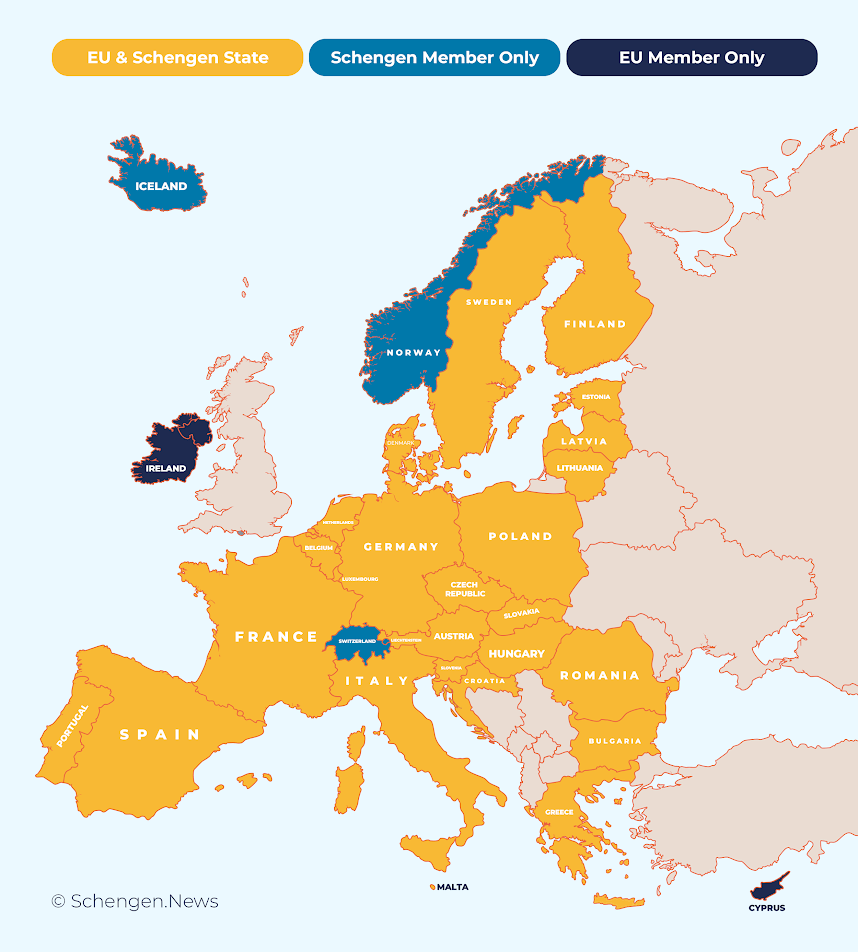2025 US Visa updates for European countries

2025 U.S. Visa Updates for European Travelers: Navigating the New Requirements
In 2025, significant changes are underway in U.S. visa policies affecting European travelers. These developments aim to enhance security and streamline travel procedures between Europe and the United States. There have been many developments since last year.
Romania Joins the U.S. Visa Waiver Program
As of January 10, 2025, Romania has been admitted to the U.S. Visa Waiver Program (VWP), allowing Romanian citizens to travel to the United States for tourism or business without obtaining a visa, for stays of up to 90 days. This change is expected to take effect around March 31, 2025. Romania becomes the 43rd country to join the VWP, following recent additions such as Croatia, Israel, and Qatar.
To qualify for the VWP, Romania met stringent security requirements, including sharing information on terrorism and serious crimes with U.S. law enforcement agencies. Participating countries must comply with strict counterterrorism, law enforcement, immigration enforcement, and secure document standards. The U.S. Department of Homeland Security will review Romania's compliance with these requirements every two years.
Introduction of the European Travel Information and Authorization System (ETIAS)
Starting in mid-2025, travelers from visa-exempt countries, including the United States, will need to obtain travel authorization through the European Travel Information and Authorization System (ETIAS) before visiting 30 European countries. This requirement applies to short-term stays of up to 90 days within any 180-day period.
ETIAS is designed to enhance security by pre-screening travelers before they arrive in Europe. The application process involves completing an online form, providing personal information, and answering security-related questions. The authorization is valid for up to three years or until the traveler's passport expires, whichever comes first. The application fee is €7, though some travelers, such as those under 18 or over 70, are exempt from paying this fee.
Visa Waiver Program (VWP) and ESTA Requirements
The Visa Waiver Program (VWP) enables citizens of 42 countries, including many European nations, to travel to the United States for business or tourism for stays of up to 90 days without obtaining a visa. However, travelers must obtain an approved Electronic System for Travel Authorization (ESTA) before boarding. It's essential to apply for ESTA well in advance, as last-minute applications may result in delays or denied boarding.
Impact on European Travelers to the United States
The inclusion of Romania in the VWP simplifies travel for Romanian citizens, eliminating the need for a visa for short-term visits to the United States. However, travelers must still obtain authorization through the Electronic System for Travel Authorization (ESTA) before their trip. ESTA is an automated system that determines the eligibility of visitors to travel under the VWP and enhances security by identifying individuals who may pose a risk.
Wikipedia, the free encyclopedia
It's important to note that while ESTA authorization allows for travel to the United States, it does not guarantee entry. Upon arrival, travelers are inspected by U.S. Customs and Border Protection officers who determine admissibility. Therefore, it's crucial for travelers to ensure they meet all entry requirements and have the necessary documentation.
Preparing for Travel in 2025
With these changes, both European travelers to the United States and U.S. travelers to Europe should plan ahead to ensure compliance with the new requirements. For Romanian citizens, this means applying for ESTA authorization before traveling to the United States. For U.S. citizens and other visa-exempt travelers heading to Europe, obtaining ETIAS authorization will be a necessary step before departure.
Travelers are advised to stay informed about the latest developments in travel regulations and to apply for the necessary authorizations well in advance of their planned travel dates to avoid any disruptions.
These updates reflect ongoing efforts to enhance security and facilitate safe and efficient travel between Europe and the United States.

